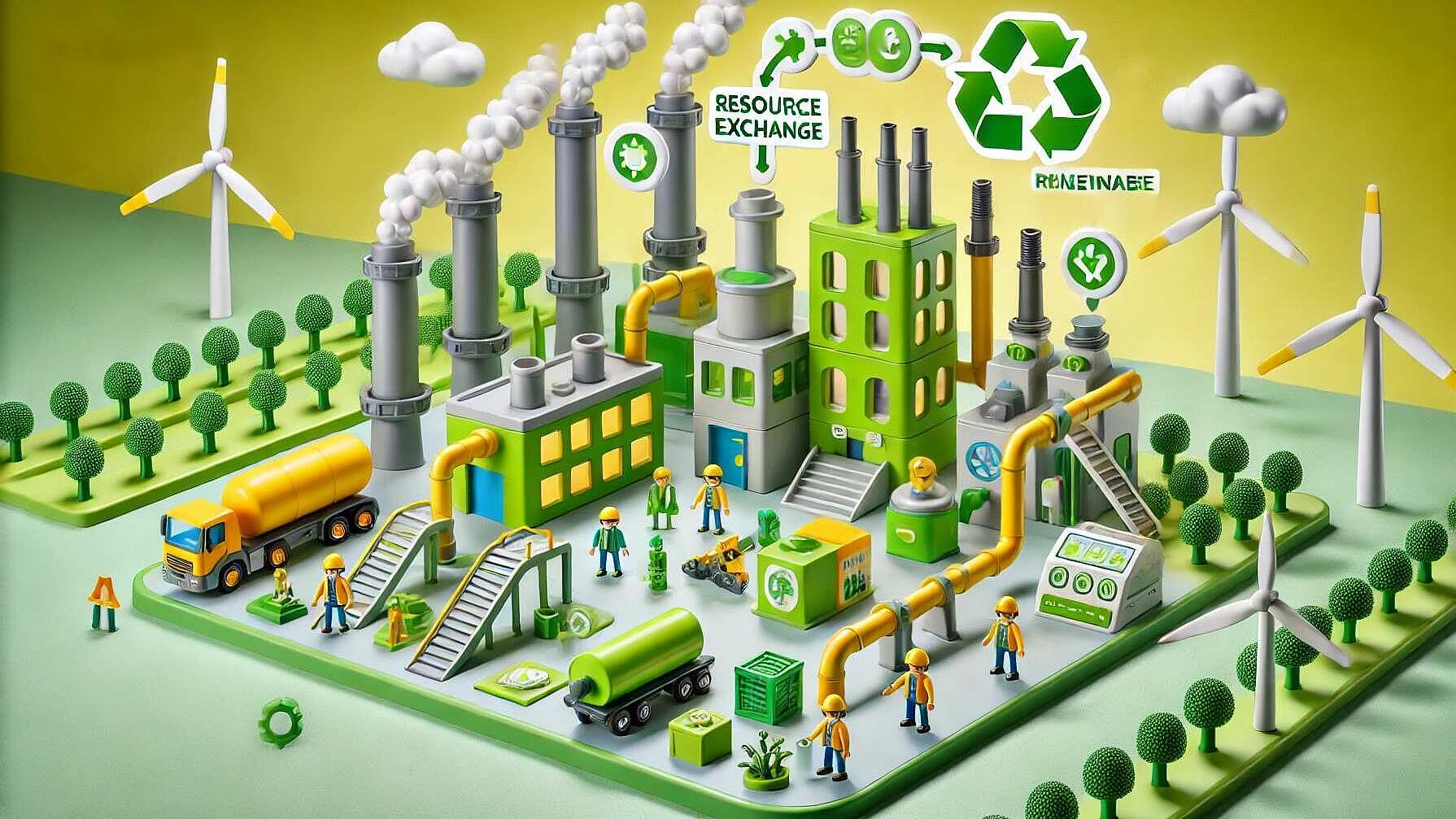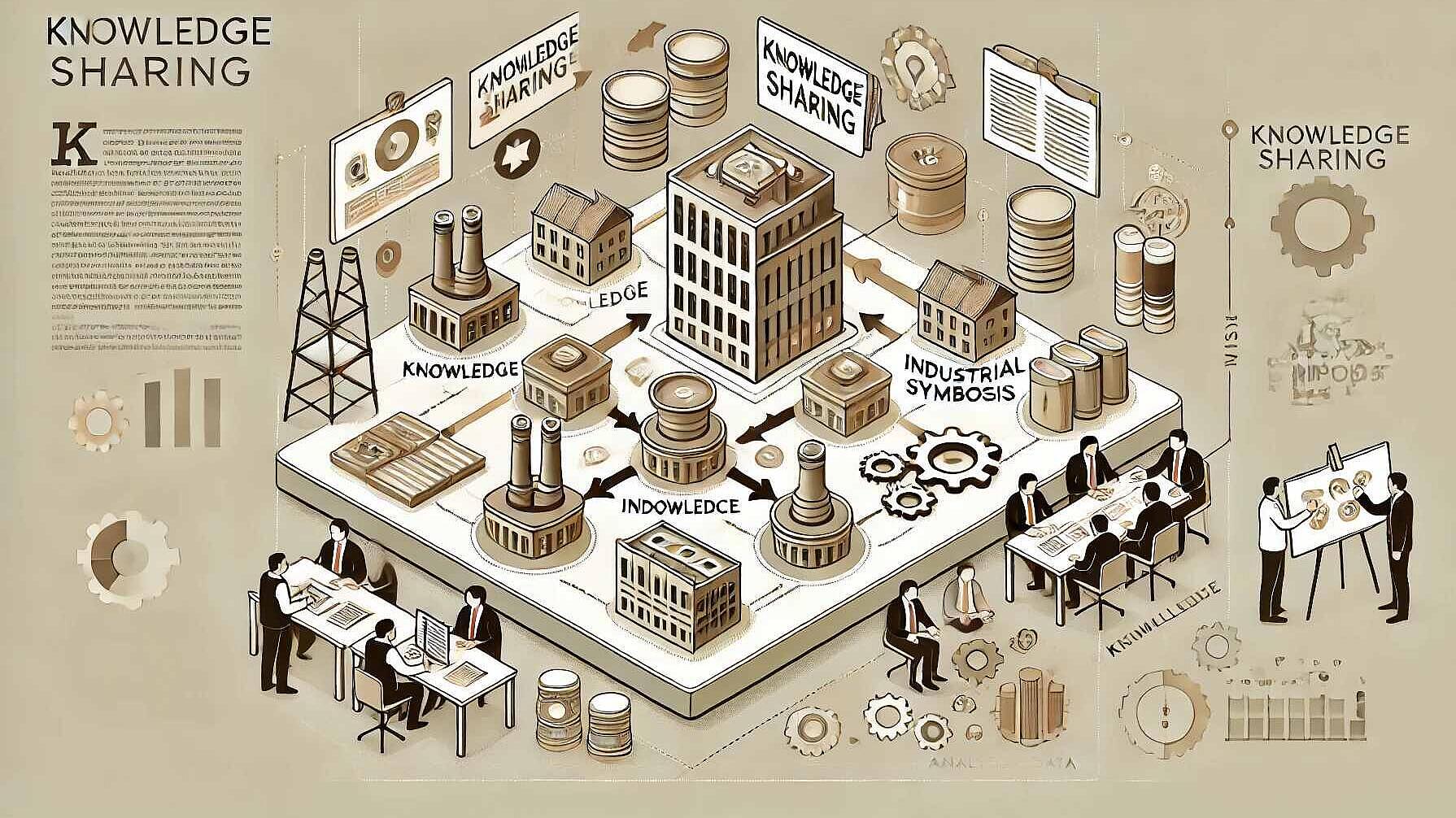 Circular Economy
Circular EconomyHarnessing Industrial Symbiosis For Sustainable Growth and Circular Economies
Summary
The report from the EU project CORALIS discusses the concept of industrial symbiosis (IS) as a crucial element of the circular economy, aiming to maximize resource efficiency and minimize waste by enabling the exchange of materials, energy, water, and by-products among industries. It spotlights the success of initiatives like the Kalundborg Eco-Industrial Park and acknowledges the role of digitalization and policy support in facilitating IS.
Despite its potential in reducing emissions, fostering competitiveness, and generating jobs, IS faces hurdles such as financial risks, regulatory complexities, and technological uncertainties, along with a lack of standardized frameworks. Innovations in digital platforms, renewable energy integration, policy incentives, and the development of industrial clusters are highlighted as drivers for IS.
To overcome barriers and enhance implementation, the report suggests addressing economic, regulatory, and technological challenges, alongside increasing awareness and coordination efforts. Looking forward, IS's expansion is tied to trends in circular business models, AI integration, cross-sector collaboration, and enhanced policy support. The report also emphasizes potential career opportunities for students and professionals in sustainability and provides avenues for engagement such as educational programs, professional networks, internships, and advocacy.
Open full article
Harnessing Industrial Symbiosis For Sustainable Growth and Circular Economies
The following article is a summary of the report “Industrial Symbiosis: Success and Deterrent Factors" delivered by the EU project CORALIS. And it is also a training article for the Enerwhizz, which is a fast-paced quiz on energy transition, greentec and renewables. Answer 5 YES-No questions in 45 seconds to earn cash coins and win prices delivered to your office or home. No registration, just play!
Check: https://enerwhizz.app/
Industrial symbiosis is transforming how industries interact, offering an innovative model for sustainability and economic efficiency. By exchanging materials, energy, water, and by-products, businesses can reduce waste, optimize resources, and drive economic growth. However, while success stories demonstrate the potential of industrial symbiosis (IS), various deterrent factors hinder its widespread implementation. This article explores the current state of IS, its innovations, challenges, and future prospects for students, professionals, and policymakers looking to engage in this dynamic field.
The Current State of Industrial Symbiosis
Industrial symbiosis is a crucial component of the circular economy, emphasizing resource efficiency and waste reduction. At its core, IS fosters inter-firm collaboration, allowing industries to use one company’s waste as another’s resource. The Kalundborg Eco-Industrial Park in Denmark remains a global benchmark, where companies share energy, water, and materials, achieving economic and environmental benefits.
Across Europe and beyond, industrial symbiosis is increasingly recognized in policy frameworks. The European Union’s Circular Economy Action Plan (CEAP) highlights IS as a key driver for achieving sustainability goals. Research suggests that IS can significantly reduce greenhouse gas emissions, enhance competitiveness, and create new job opportunities. The transition from linear to circular systems is being facilitated through digitalization, big data, and technological advancements, further accelerating IS adoption.
Despite its advantages, IS faces challenges. Companies often hesitate due to financial risks, regulatory complexities, and technological uncertainties. Additionally, the absence of standardized frameworks and business models can make IS implementation difficult. However, the growing emphasis on sustainability and resource efficiency presents immense opportunities for overcoming these hurdles.
Innovations and Opportunities
The success of industrial symbiosis depends on innovative business models, advanced technologies, and collaborative efforts. Several key innovations are shaping the future of IS:
- Digital Platforms and Big Data: The integration of digital tools is streamlining resource exchange between industries. Platforms that map resource flows enable businesses to identify potential synergies efficiently. Smart sensors and IoT technologies improve waste tracking, allowing real-time monitoring of resource availability.
- Renewable Energy Integration: Many IS initiatives focus on utilizing excess heat, biomass, and other renewable energy sources. Energy symbiosis, where industries exchange surplus energy, is reducing fossil fuel dependence and lowering operational costs.
- Policy and Incentive Programs: Governments and organizations are providing financial incentives, subsidies, and regulatory support to encourage IS adoption. Horizon Europe and national funding schemes are backing research and development projects that enhance IS collaboration.
- Industrial Clusters and Eco-Industrial Parks: Establishing dedicated industrial hubs with shared infrastructure and common resource pools fosters long-term IS relationships. These clusters optimize logistics, improve waste management, and promote sustainable manufacturing practices.
Successful examples illustrate the potential of IS. The Kwinana Industrial Area in Australia and the National Industrial Symbiosis Programme (NISP) in the UK have demonstrated that strategic partnerships and regulatory frameworks can significantly enhance resource efficiency.
Overcoming Barriers and Enhancing Implementation
While industrial symbiosis presents clear benefits, companies and governments must address critical deterrent factors:
- Economic and Financial Barriers: Upfront investment costs can be high, discouraging participation. Companies may be reluctant to engage in IS without immediate financial benefits. Solutions include financial support mechanisms, tax incentives, and risk-sharing models.
- Regulatory and Legal Challenges: Inconsistent regulations across regions make it difficult to implement IS projects. Clarifying waste classifications, defining legal responsibilities, and introducing IS-specific policies can help create a conducive environment.
- Technological and Infrastructure Constraints: Industries require advanced technologies to facilitate resource exchanges. Lack of infrastructure, such as pipelines for waste heat transfer, can impede symbiotic relationships. Governments and private investors must support the development of necessary infrastructure.
- Lack of Awareness and Coordination: Many industries remain unaware of the potential benefits of IS. Education, workshops, and collaboration platforms can promote knowledge-sharing and best practices.
By addressing these barriers, IS can transition from pilot projects to large-scale implementations, reinforcing its role in sustainable industrial development.
The Future of Industrial Symbiosis
The future of industrial symbiosis is promising, with increasing global attention on sustainability and circular economy principles. Several key trends will shape the evolution of IS:
- Expansion of Circular Business Models: Companies are shifting from linear supply chains to circular strategies that prioritize waste reduction and resource optimization.
- Integration of Artificial Intelligence and Machine Learning: AI-driven platforms can predict resource demands, optimize material flows, and suggest efficient symbiotic partnerships.
- Cross-Sector Collaboration: Industries beyond manufacturing, such as agriculture and urban planning, are exploring IS applications to enhance sustainability.
- Enhanced Policy Support: As governments recognize IS as a tool for achieving climate goals, stronger policies, subsidies, and regulatory frameworks will drive adoption.
For students and young professionals, industrial symbiosis presents an exciting career path. Opportunities exist in sustainability consulting, environmental engineering, circular economy research, and policy development. Engaging in academic programs, internships, and research projects focused on IS can open doors to impactful careers.
How You Can Get Involved
If you’re interested in industrial symbiosis, there are several ways to deepen your engagement:
- Educational Programs: Universities offer courses on circular economy and industrial ecology.
- Professional Networks: Organizations like the Ellen MacArthur Foundation and the International Society for Industrial Ecology provide valuable resources and networking opportunities.
- Internships and Research: Participating in IS projects can provide hands-on experience and industry insights.
- Advocacy and Awareness: Promoting IS within your industry or community can drive local implementation.
Conclusion
Industrial symbiosis is more than just a sustainability trend—it is a transformative approach to industrial operations that fosters economic resilience, environmental stewardship, and resource efficiency. While challenges persist, innovative solutions and policy support are paving the way for broader adoption. For the next generation of professionals, IS represents an opportunity to drive meaningful change in how industries function and collaborate. By embracing IS, we can collectively build a more sustainable and circular future.
If you read the full article, you are perfectly equipped to play and win. And to have fun with friends leagues, leaderboards, missions and whizzers. And likely in your language as we are supporting 12 languages.
And if you found nuggets you want to have a deeper look at – check the source document, the report “Industrial Symbiosis: Success and Deterrent Factors" delivered by the EU project CORALIS.



